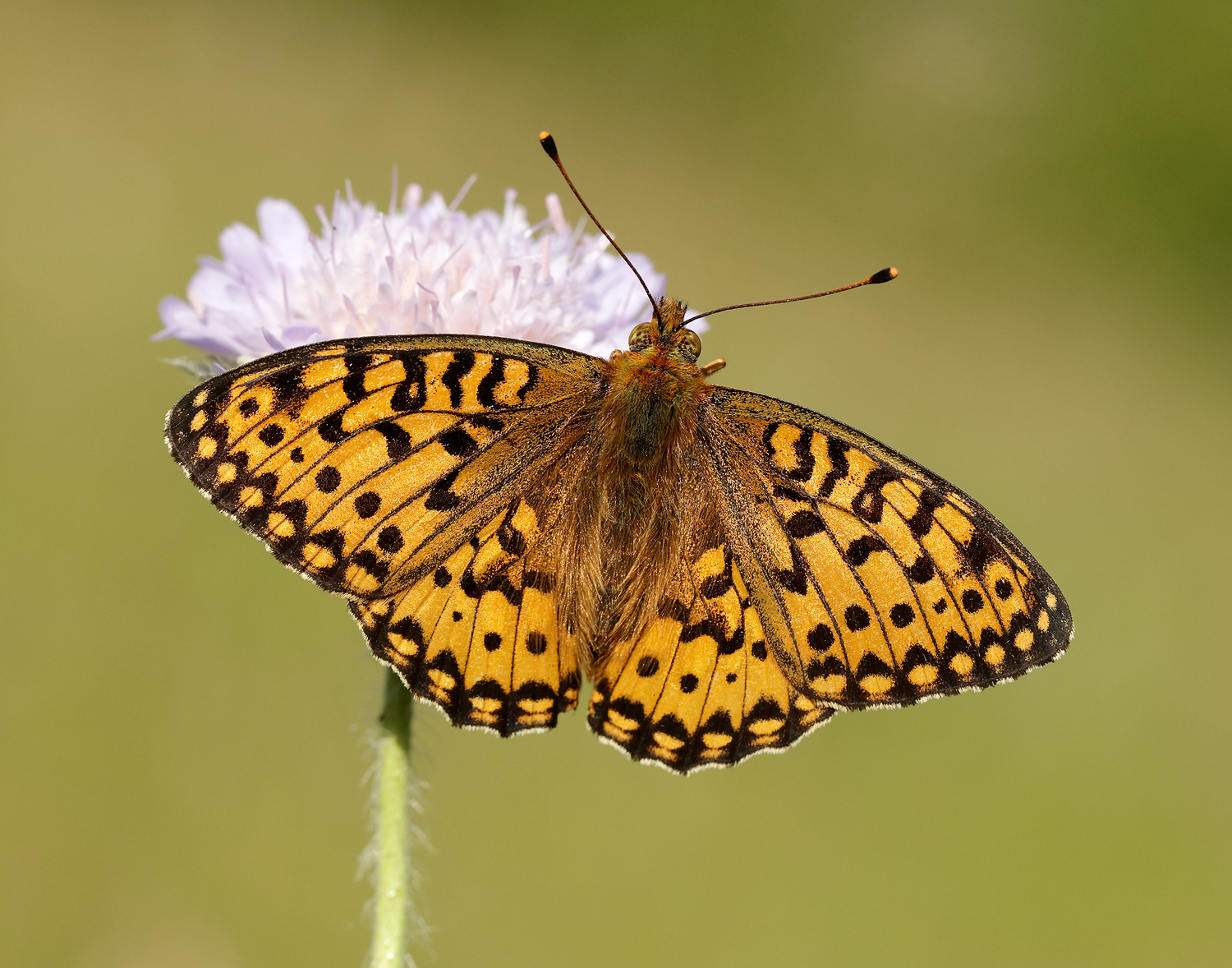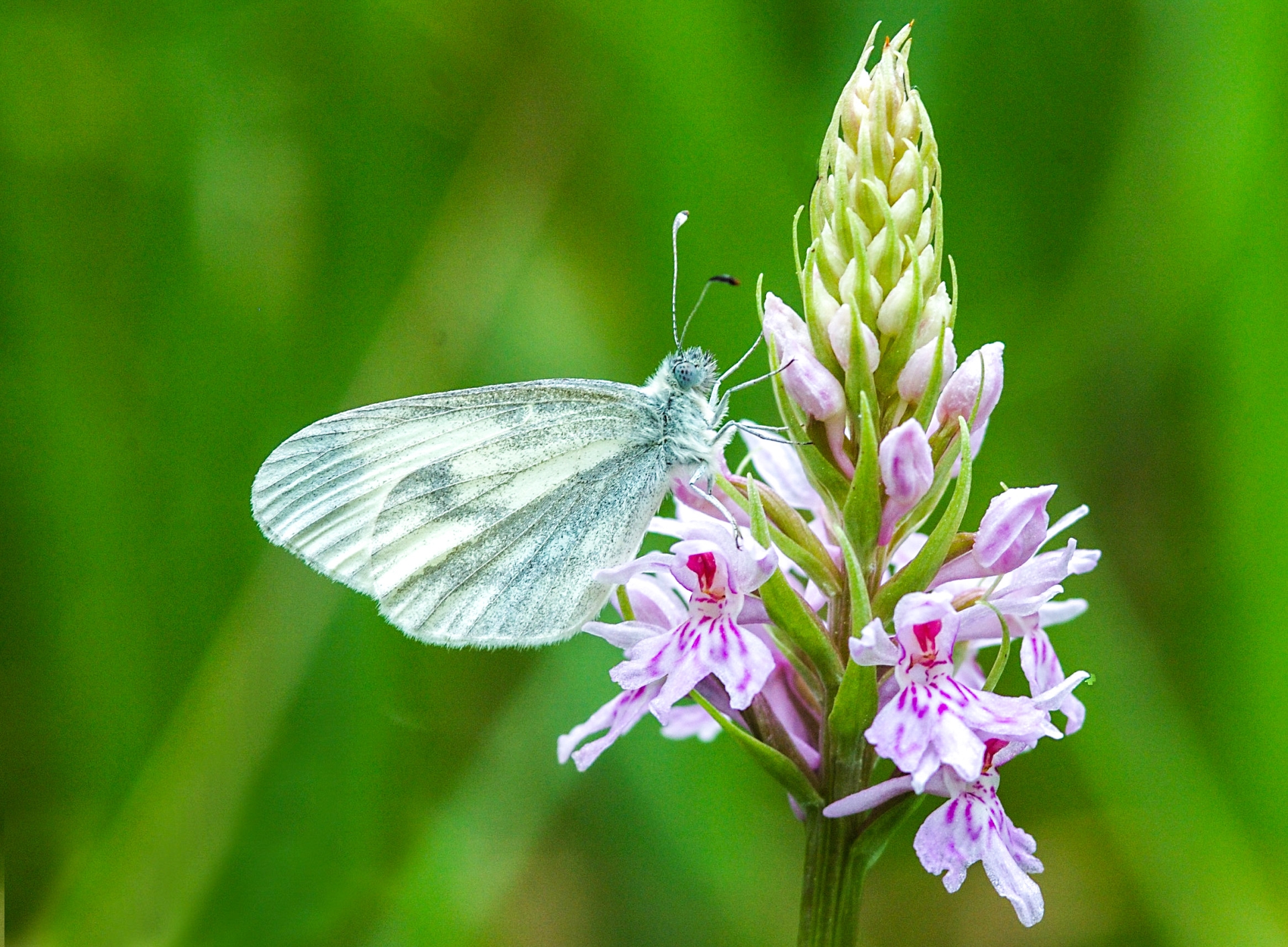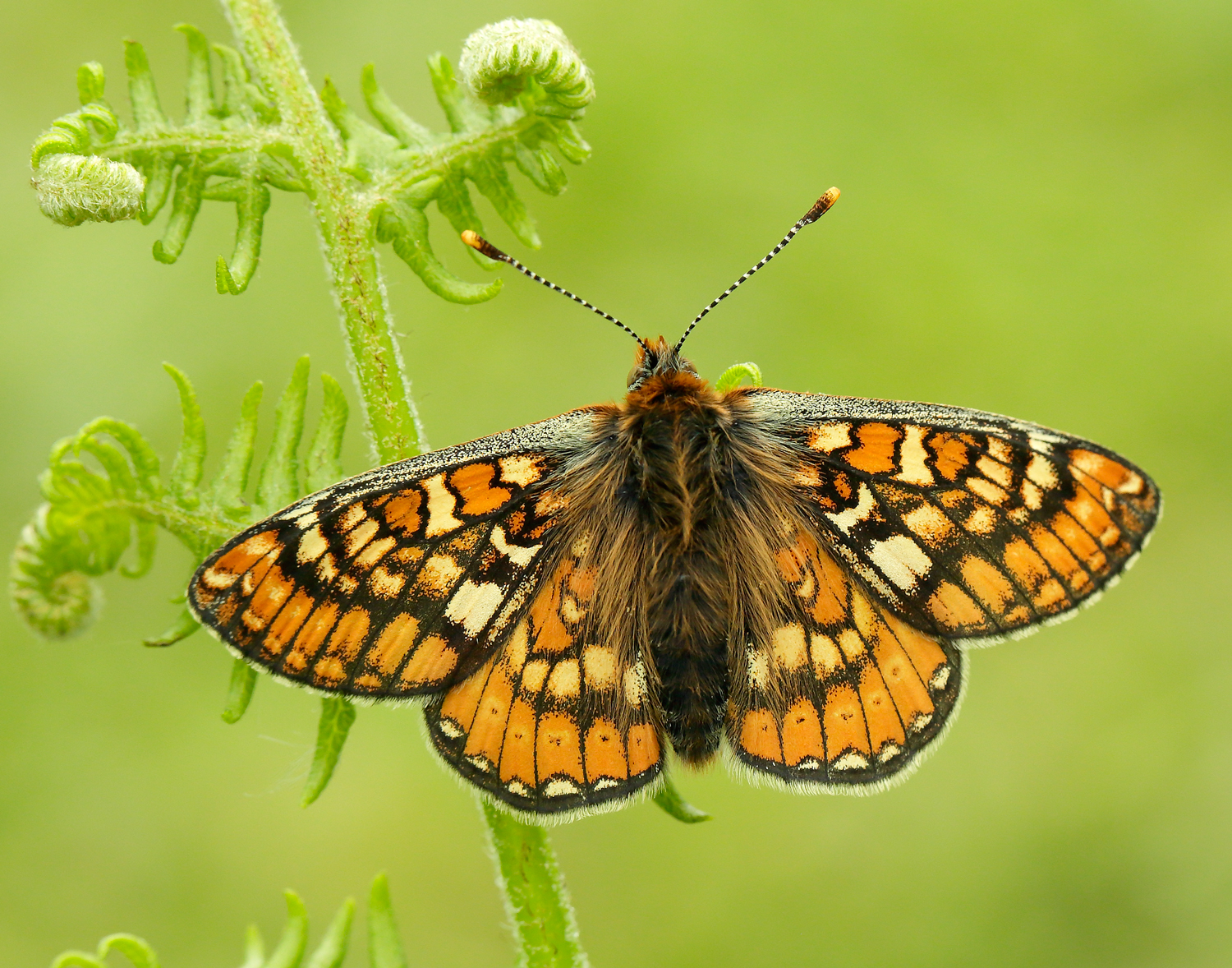
The four butterfly species under grave threat in Devon. Credit: Jim Asher/Iain H Leach
Four species of butterfly in Devon had their worst year in at least a decade, new figures from a butterfly charity have revealed.
Numbers of silver-washed fritillary, dark green fritillary, wood white and small heath are all lower than at any time in the past 10 years, according to Butterfly Conservation.
Three more species – pearl-bordered fritillary, small pearl-bordered fritillary and grayling – had their second-lowest count for the period and white admiral its third lowest.

Above: The dark green fritillary butterfly has lost colonies in Devon in recent decades. Credit: Iain H Leach
One thing everyone with a garden or land can do is take the charity’s Grow Don’t Mow pledge and abstain from mowing during the growing months – see below for more details.
The survey numbers come from the UK Butterfly Monitoring Scheme (UKBMS) and Butterflies for the New Millennium (BNM) administered by the national charity, which last month revealed 2024 was the fifth-worst year overall for butterflies across the country, with more than half of species in long-term decline for the first time on record.
Butterfly Conservation Devon branch recorder Pete Hurst has produced a snap-shot of the local picture by extracting figures for 10 well-loved local species in the county.
He said: “Unfortunately, these figures show concerning drops in the numbers of beloved local butterfly species in Devon.
“This is in line with the national picture and I would expect there to be similar reductions in other Devon species as well.”
-1748255394092.jpg)
Above: The small pearl bordered fritillary had its second lowest count in a decade during a recent survey. Credit: Iain H Leach
Worryingly, Mr Hurst’s data showed that last year wasn’t just a bad year but was significantly worse for many than the next-worst year in the decade.
His study found the silver-washed fritillary was 26% lower than the previous lowest count and 38% lower for the whole 10-year period.
Meanwhile, the dark green fritillary was 37% lower than the next lowest count and 60% lower for the 10-year period. This a butterfly which has lost colonies in Devon in recent decades.
The wood white was 13.6% lower than any previous year and a staggering 99% lower than the 10-year average. This butterfly is showing significantly smaller populations which is of concern – colonies may collapse.

Above: Wood white numbers are a huge 99% lower for the 10 year period and its Devon colonies may be in danger of collapse. Credit: Jim Asher
The small heath butterfly was 67% lower than the previous lowest year and 74% lower for the 10-year period, also with evidence of markedly smaller populations which are more likely to collapse.
Mr Hurst added: “We know long spells of wet weather, which now seem to be happening more frequently, will have had a significant negative impact on last year’s showing of our butterflies, but there is much more at play.
“Sadly, we humans have destroyed wildlife habitats, polluted the environment and used pesticides on an industrial scale as well as changing the climate.
“That means that when we have poor weather, these already-depleted butterfly populations are highly vulnerable and can't bounce back like they once did - and with climate change, that unusual weather is becoming more and more usual."
Some butterflies did fare better: Marsh fritillary, a species found on Dartmoor, had its fourth-highest count for the decade. Mr Hurst suggested that its caterpillars might be able tolerate long periods of very wet weather better than others.
Orange tip and holly blue butterflies also did well in the spring, and Mr Hurst said that gatekeeper and meadow brown species were reasonably frequent in some places in the summer.

Above: The marsh fritillary butterfly is one of those bucking the trend and has seen its fourth highest count for the decade. Credit: Iain H Leach
Mr Hurst said: “My annual Wider Countryside Butterfly Survey square on the edge of Dartmoor actually had the second highest count of butterflies in the last six years with a high number of gatekeepers (53) and eight species of butterfly which is the highest in the last six years.”
Find out more about butterflies and what you can do to help them at https://butterfly-conservation.org
Subscribe or register today to discover more from DonegalLive.ie
Buy the e-paper of the Donegal Democrat, Donegal People's Press, Donegal Post and Inish Times here for instant access to Donegal's premier news titles.
Keep up with the latest news from Donegal with our daily newsletter featuring the most important stories of the day delivered to your inbox every evening at 5pm.